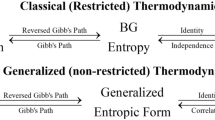Abstract
THE recent development of Dirac's theory of the electron has made it possible to compare the radioactive -transformation with a process in which a pair of differently charged electrons is produced in the neighbourhood of the nucleus, the positive of which is captured in order to increase the nuclear charge by one unit. In addition to an investigation on this kind of process, which has already been described1, a more general application of the conservation laws, characteristic for the theory, may now be described.
This is a preview of subscription content, access via your institution
Access options
Subscribe to this journal
Receive 51 print issues and online access
$199.00 per year
only $3.90 per issue
Buy this article
- Purchase on SpringerLink
- Instant access to full article PDF
Prices may be subject to local taxes which are calculated during checkout
Similar content being viewed by others
References
Beck and Sitte, Z. Phys., 86, 105; 1933: Beck, Z. Phys., 83, 498; 1933: Sitte, Z. Phys., 34, 627; 1933.
Proc. Roy. Soc., A, 141, 502; 1933.
Proc. Roy. Soc., A, 139, 659; 1933.
Author information
Authors and Affiliations
Rights and permissions
About this article
Cite this article
BECK, G. Conservation Laws and -Emission. Nature 132, 967 (1933). https://doi.org/10.1038/132967a0
Issue Date:
DOI: https://doi.org/10.1038/132967a0



